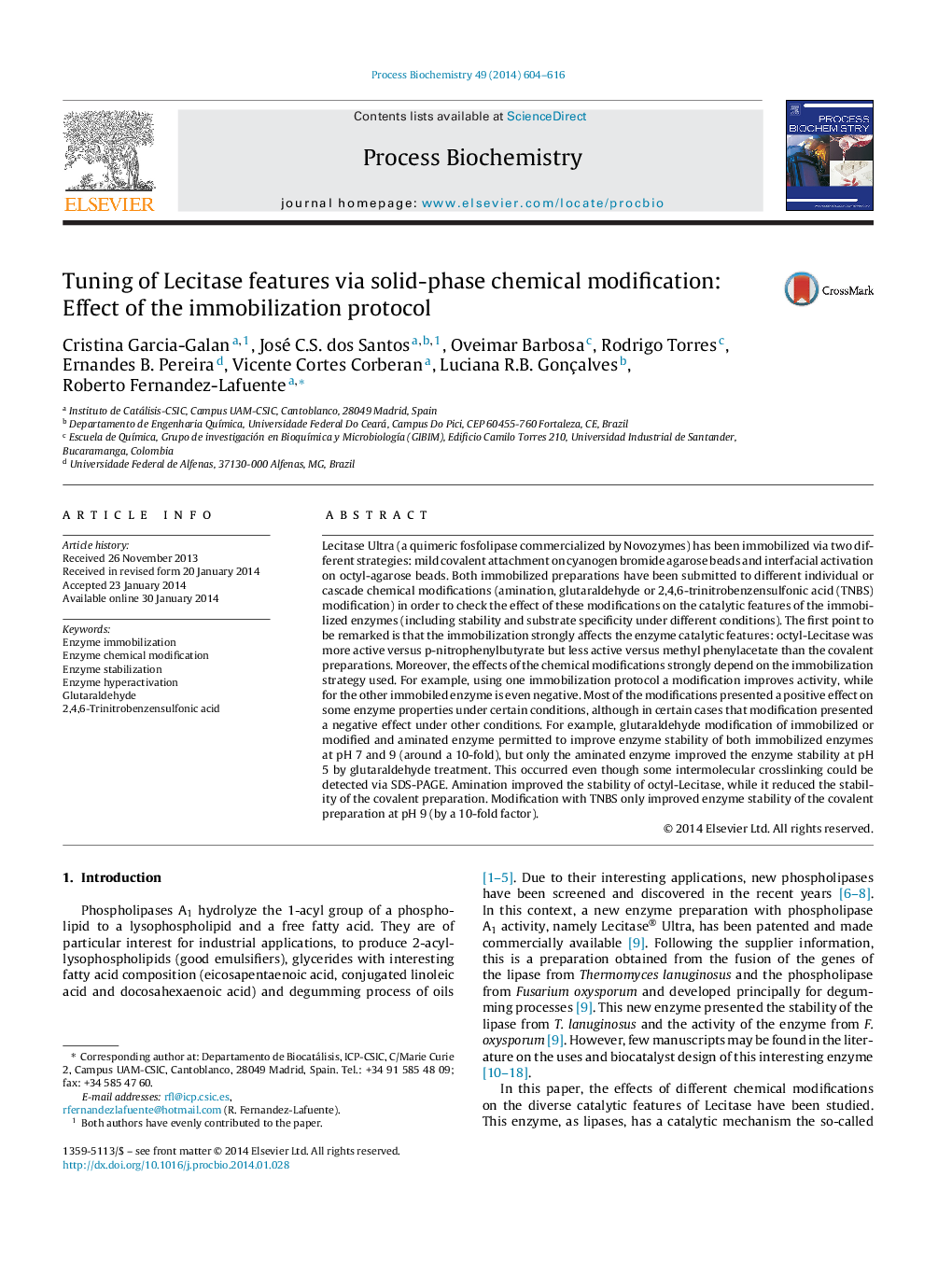| کد مقاله | کد نشریه | سال انتشار | مقاله انگلیسی | نسخه تمام متن |
|---|---|---|---|---|
| 34706 | 45040 | 2014 | 13 صفحه PDF | دانلود رایگان |

• Lecitase Ultra has been immobilized via covalent attachment and interfacial activation.
• Both immobilized preparations have been submitted to different chemical modifications.
• The activity and stability under different conditions of the different preparations were greatly altered.
• Immobilization protocol alters the effect of the chemical modification on Lecitase properties.
Lecitase Ultra (a quimeric fosfolipase commercialized by Novozymes) has been immobilized via two different strategies: mild covalent attachment on cyanogen bromide agarose beads and interfacial activation on octyl-agarose beads. Both immobilized preparations have been submitted to different individual or cascade chemical modifications (amination, glutaraldehyde or 2,4,6-trinitrobenzensulfonic acid (TNBS) modification) in order to check the effect of these modifications on the catalytic features of the immobilized enzymes (including stability and substrate specificity under different conditions). The first point to be remarked is that the immobilization strongly affects the enzyme catalytic features: octyl-Lecitase was more active versus p-nitrophenylbutyrate but less active versus methyl phenylacetate than the covalent preparations. Moreover, the effects of the chemical modifications strongly depend on the immobilization strategy used. For example, using one immobilization protocol a modification improves activity, while for the other immobiled enzyme is even negative. Most of the modifications presented a positive effect on some enzyme properties under certain conditions, although in certain cases that modification presented a negative effect under other conditions. For example, glutaraldehyde modification of immobilized or modified and aminated enzyme permitted to improve enzyme stability of both immobilized enzymes at pH 7 and 9 (around a 10-fold), but only the aminated enzyme improved the enzyme stability at pH 5 by glutaraldehyde treatment. This occurred even though some intermolecular crosslinking could be detected via SDS-PAGE. Amination improved the stability of octyl-Lecitase, while it reduced the stability of the covalent preparation. Modification with TNBS only improved enzyme stability of the covalent preparation at pH 9 (by a 10-fold factor).
Journal: Process Biochemistry - Volume 49, Issue 4, April 2014, Pages 604–616